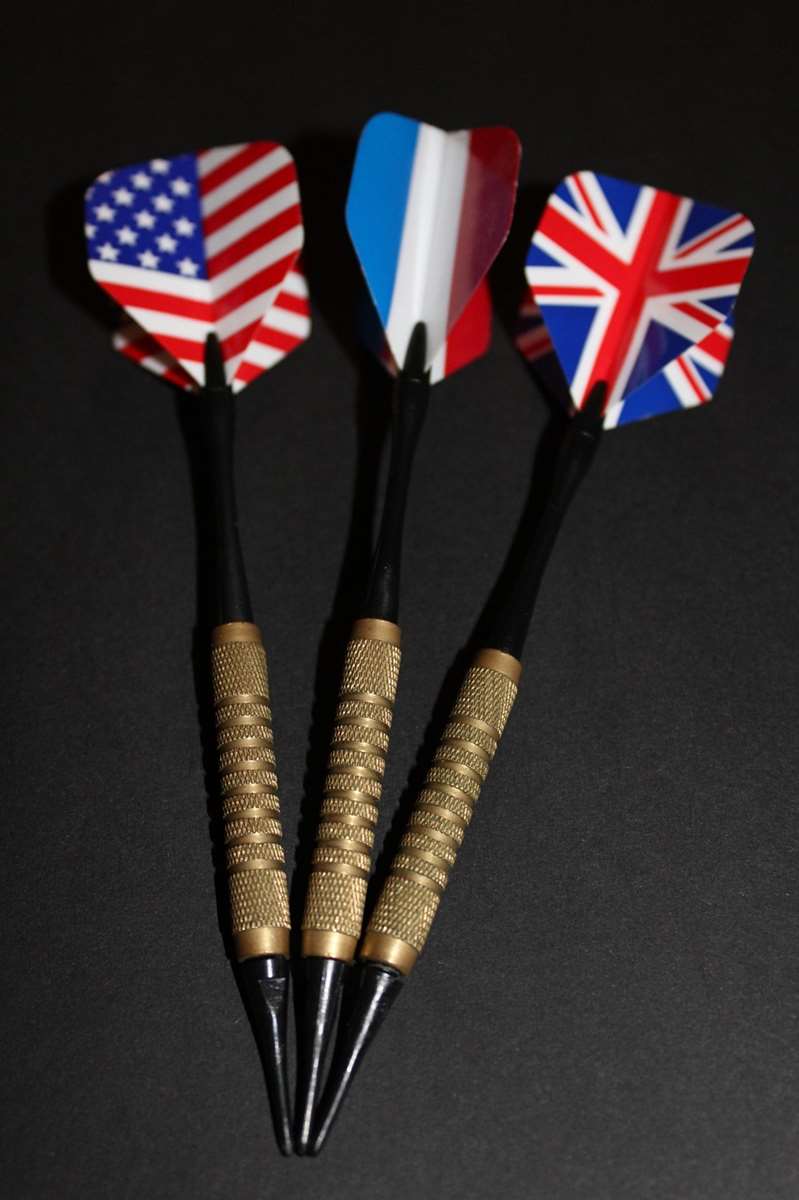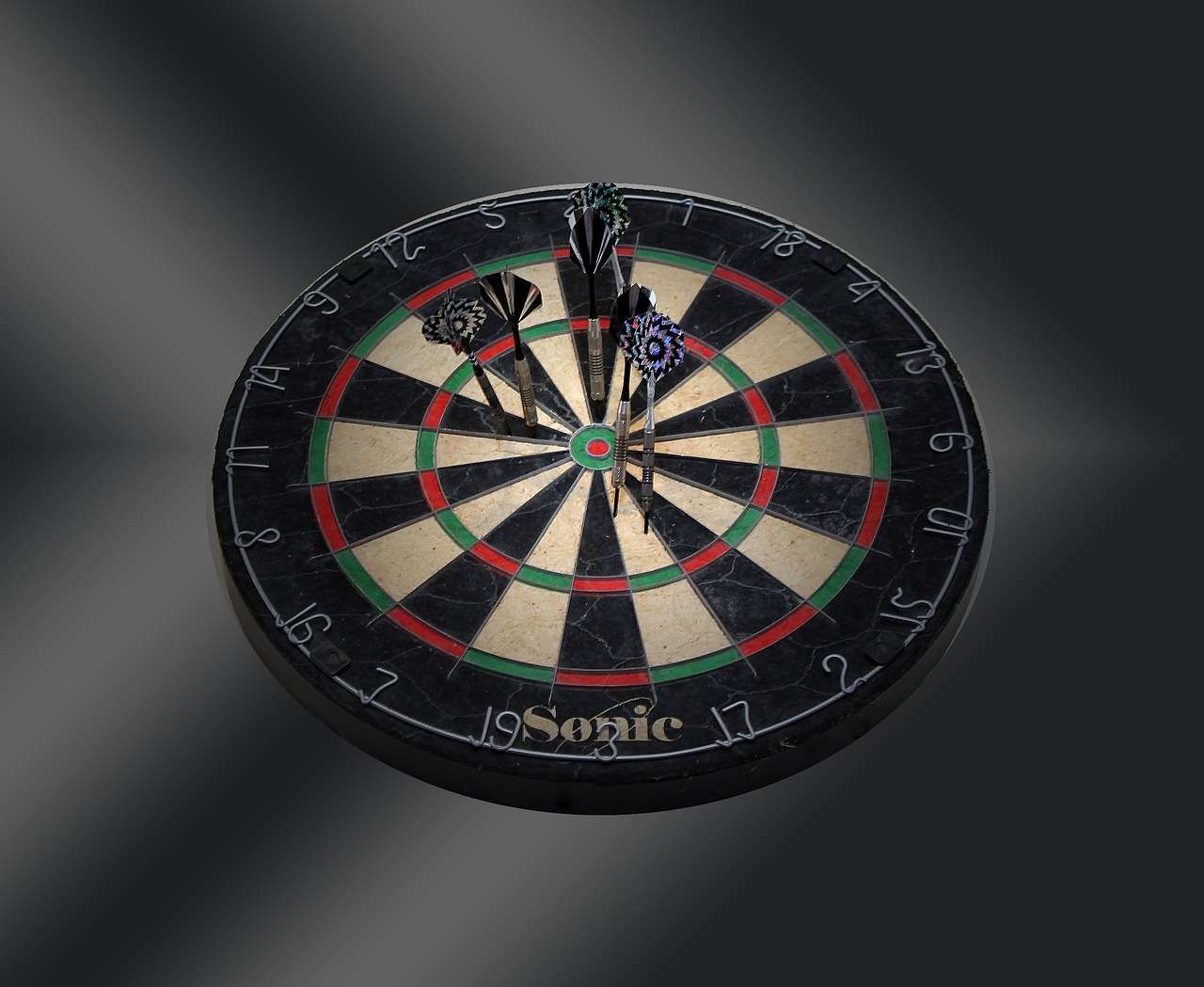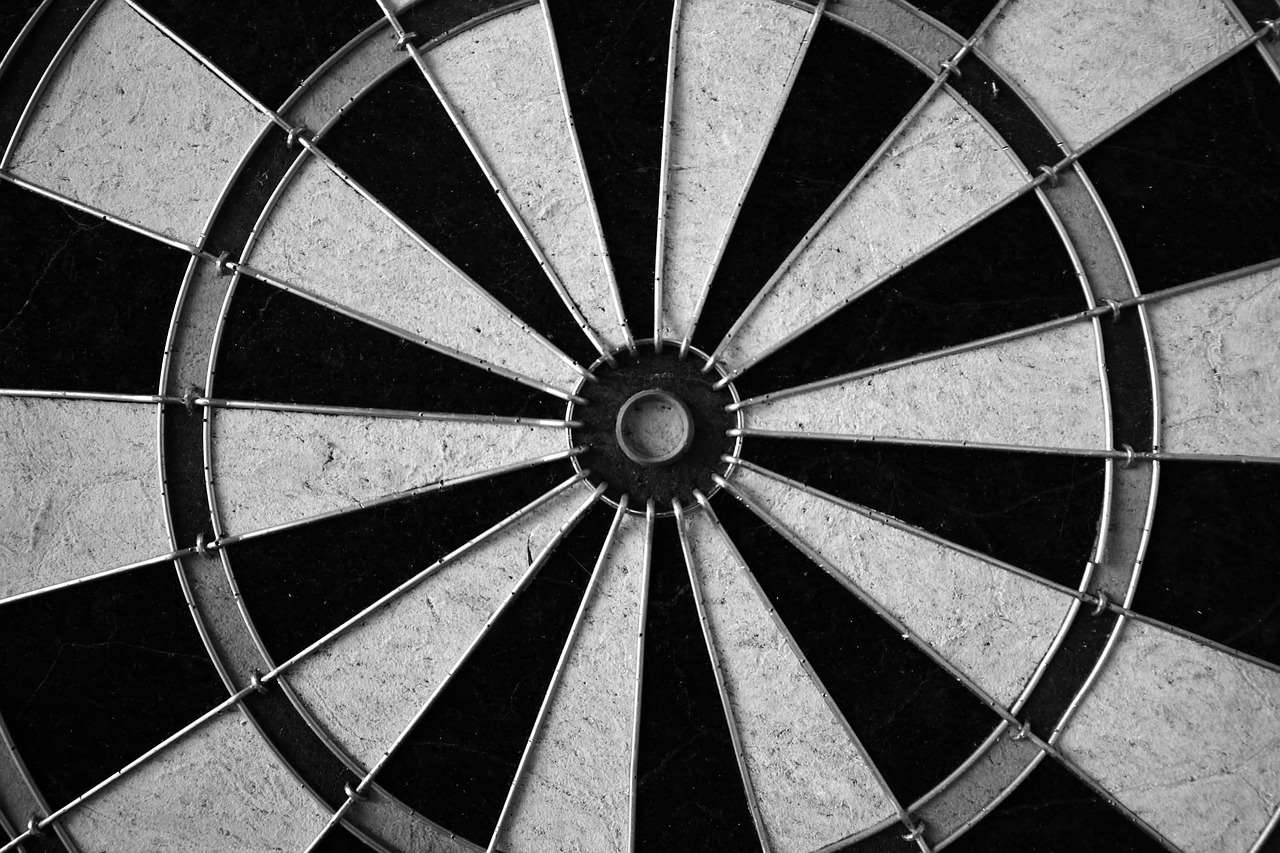Understanding dart board standards is crucial for ensuring fair play and an enjoyable game. This article will outline the key aspects of these standards, helping you set up your own game room or participate in official competitions. We’ll also cover essential setup tips, common mistakes to avoid, and more.
⚠️ Still Using Pen & Paper (or a Chalkboard)?! ⚠️
Step into the future! The Dart Counter App handles all the scoring, suggests checkouts, and tracks your stats automatically. It's easier than you think!
Try the Smart Dart Counter App FREE!Ready for an upgrade? Click above!
Choosing the right dartboard is the first step towards a great game, and understanding dart board standards helps you make that choice. Many factors go into creating a quality dartboard that meets these standards; we’ll explore all of the relevant details below, beginning with the physical dimensions.
Understanding the Dimensions and Specifications of Dart Board Standards
The most important aspect of dart board standards relates to the board’s physical dimensions. These dimensions are standardized to ensure consistent gameplay across various leagues and competitions. The standard size of a dartboard is 18 inches in diameter. This measurement is crucial because it defines the positioning of the scoring areas, including the bullseye, the inner and outer bull, and the various numbered sections. Deviation from these dart board standards can significantly affect scoring accuracy and game fairness.

Beyond the overall diameter, the placement and size of each scoring segment are also precisely defined within dart board standards. The wire separating each number section needs to be a specific thickness to maintain consistent play. There are specific guidelines around the materials used to create the board, which we will discuss below.
Wire Spacing and Material
The wires separating the scoring segments are not just arbitrary; their spacing is meticulously determined in the accepted dart board standards. Consistent spacing ensures that darts land in the intended areas, avoiding ambiguity during scoring. The material of these wires is also a factor; high-quality boards often utilize robust, durable wires designed to withstand numerous impacts.
The material of the board itself is just as crucial. Traditional bristle boards, made from sisal fibers, are widely preferred due to their ability to absorb darts. This prevents damage to the darts and provides a consistent bounce for proper scoring. For example, using a cheap plastic dartboard will not adhere to these dart board standards and often impacts the accuracy and enjoyability of a game.
Materials and Construction: Adhering to Dart Board Standards
High-quality dartboards that meet dart board standards are typically made from sisal fibers. Sisal is a natural fiber known for its durability and ability to self-heal after dart impacts. This self-healing characteristic is important for maintaining the integrity of the scoring segments over time, ensuring a long lifespan for the board. Cheaper alternatives may use foam or plastic, but these materials don’t offer the same level of longevity or consistent playing experience.

The construction of the dartboard is also crucial. A well-constructed board will have a sturdy backing to prevent warping or bending. The overall weight is also a good indication of quality; a heavier board will generally be more stable and less prone to movement during play. These factors are also aspects of dart board standards, although not codified in the same way as size and material specifications.
The Importance of a Proper Surround
While not directly part of the dartboard itself, the surround is an important aspect of the overall setup and contributes to adhering to dart board standards of play. A proper surround protects the wall behind the board from damage and provides a stable base for mounting. Choosing a quality surround that adequately secures the board is vital for ensuring safe and consistent gameplay.
Setting Up Your Dartboard: Tips for Optimal Play
Proper setup is key to enjoying the game. The recommended height of darts oche is generally 5ft 8in from the floor to the center of the dartboard. This ensures fair gameplay for players of varying heights. This standard is important for those who compete in professional or amateur leagues. Getting this wrong can be a major reason for failing to stick to dart board standards.
The how long darts oche should be is also a factor. The distance from the oche to the dartboard is usually 7 feet 9 1/4 inches. Getting this spacing correct is crucial for a consistent game across players.
Beyond just the height and distance, the environment plays a significant role. Avoid playing in drafty rooms or areas with strong air currents. These conditions can drastically affect dart trajectory, leading to inconsistencies and impacting adherence to dart board standards.
Additionally, it’s important to consider the lighting. Adequate lighting will help players clearly see the scoring segments and increase the accuracy of their throws. A dimly lit room can compromise the accuracy of even the most skilled players, again impacting the fairness that underpins dart board standards.

Remember to always use the correct type of darts for your board. Using steel-tip darts on a soft-tip board will damage the board, and vice-versa. It is also advisable to use a good quality dartboard with appropriate accessories.
Using an Electronic dart score counter can significantly enhance the gameplay and ensure accurate scoring, particularly for larger matches or tournaments.
Common Mistakes to Avoid
One of the most common mistakes is using a poorly constructed or low-quality dartboard. These boards often fail to meet dart board standards, leading to inconsistent bounces and scoring difficulties. This can not only affect the fairness of a game but also the enjoyment of playing. Investing in a quality sisal board will go a long way toward ensuring a superior experience.
Another common mistake is neglecting proper setup. As mentioned earlier, the height of darts oche and the distance to the board are critical factors influencing accuracy. Even a slight deviation can lead to scoring discrepancies and impact the fairness of the game.
Finally, failing to use the right darts for your board will also affect gameplay and adherence to proper dart board standards. Make sure your steel tip darts are used on a steel tip board, and soft tip darts are used on soft tip boards. This will greatly improve the lifespan of your equipment.

Practicing good throwing technique is also crucial. Many players make common mistakes in their throw that directly impact accuracy. These mistakes often stem from improper grip, arm movement, or follow-through. Watching tutorials, practicing regularly, and focusing on technique will improve your game considerably. You can even improve your technique by playing games like bullseye dart board game.
Choosing the Right Dartboard: A Buyer’s Guide
When selecting a dartboard, consider factors such as material, construction quality, and overall durability. Look for boards made of high-quality sisal fibers for optimal performance and longevity. A sturdy backing and a robust wire system are also important characteristics of quality dartboards that fully adhere to dart board standards.
Read reviews from other players before making your purchase. User feedback can offer valuable insights into the performance and durability of various dartboard models. Pay attention to the consensus view on the overall quality and performance and make sure that you choose a dartboard that meets the dart board standards for your intended use.
Consider purchasing your darts and accessories from reputable brands. Quality darts and accessories are essential to improving gameplay and adhering to dart board standards and enhancing your experience.
Understanding the nuances of dart board standards isn’t just about following rules; it’s about appreciating the craftsmanship, precision, and fairness inherent in the game itself. This understanding improves not just your game but your entire experience.
Dartboard Maintenance and Care
Regular maintenance can significantly extend the life of your dartboard. After each playing session, gently remove any stray darts from the board. Avoid excessive force, as this could damage the sisal fibers. Over time, the sisal fibers may wear out, resulting in decreased performance. This is a normal process, but you can prolong the life of your board by following these maintenance guidelines.
You can also consider rotating your dartboard periodically to ensure even wear and tear. This is particularly important if you consistently aim for the same areas of the board. By rotating the board, you can distribute the impacts more evenly, prolonging the lifespan and performance of your dartboard.

Another crucial factor often overlooked is the care of your darts. Regular cleaning helps prevent the build up of dust, debris, or dirt that may affect the trajectory and performance of your darts. This is an overlooked aspect of maintaining dart board standards, but it ensures fairness and enjoyment.
Conclusion: Mastering Dart Board Standards for a Superior Game
Understanding and applying dart board standards is paramount for a fair, enjoyable, and consistent game of darts. From the precise dimensions and materials of the board itself to the optimal setup and consistent maintenance, adherence to these standards ensures a level playing field for all players. By selecting a high-quality dartboard, maintaining it properly, and practicing good throwing techniques, you can elevate your game to new heights.
Remember to regularly review the dart board standards relevant to your league or competition to stay informed and maintain fair play. Explore the resources available online and continue to improve your understanding to ensure enjoyable games for years to come. Consider practicing different darts match play strategies to keep things interesting. You might also find it helpful to consult a darts checkout table to improve your game.
So, whether you’re a seasoned pro or a casual player, understanding and implementing the principles discussed in this article will undoubtedly enhance your dart-playing experience. Now go out there, and hit that bullseye!
For those interested in a specific brand of darts, check out our review of the xqmax darts set. And if you’re looking for the latest releases, be sure to explore our page on target darts new release. Additionally, understanding the dartboard points system is essential for scoring and playing effectively. Finally, if you’re interested in improving your spatial awareness, look into more information on darts bull to oche distance and height of darts oche measurements. Knowing the proper how long darts oche should be is another crucial aspect of the game.
Hi, I’m Dieter, and I created Dartcounter (Dartcounterapp.com). My motivation wasn’t being a darts expert – quite the opposite! When I first started playing, I loved the game but found keeping accurate scores and tracking stats difficult and distracting.
I figured I couldn’t be the only one struggling with this. So, I decided to build a solution: an easy-to-use application that everyone, no matter their experience level, could use to manage scoring effortlessly.
My goal for Dartcounter was simple: let the app handle the numbers – the scoring, the averages, the stats, even checkout suggestions – so players could focus purely on their throw and enjoying the game. It began as a way to solve my own beginner’s problem, and I’m thrilled it has grown into a helpful tool for the wider darts community.